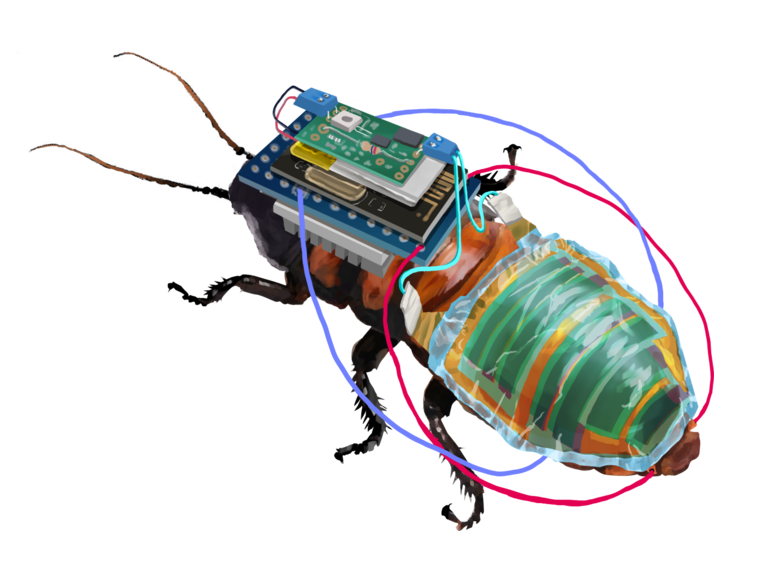Scientists discover how to control cockroaches remotely with solar panels
Cyborg cockroaches could be used to inspect hazardous areas or monitor the environment of difficult to reach places

Your support helps us to tell the story
From reproductive rights to climate change to Big Tech, The Independent is on the ground when the story is developing. Whether it's investigating the financials of Elon Musk's pro-Trump PAC or producing our latest documentary, 'The A Word', which shines a light on the American women fighting for reproductive rights, we know how important it is to parse out the facts from the messaging.
At such a critical moment in US history, we need reporters on the ground. Your donation allows us to keep sending journalists to speak to both sides of the story.
The Independent is trusted by Americans across the entire political spectrum. And unlike many other quality news outlets, we choose not to lock Americans out of our reporting and analysis with paywalls. We believe quality journalism should be available to everyone, paid for by those who can afford it.
Your support makes all the difference.Researchers in Japan have created cyborg cockcroaches equipped with wireless technology that allows them to be controlled remotely.
The team from the Riken institute’s Cluster for Pioneering Research (CPR) experimented with Madagascar cockcroaches, using wires to stimulate the leg segments of the 6cm-long creatures.
An ultrathin solar panel was placed on the insects’ backs, which provided charge to batteries housed in specially fitted backpacks.
After charging the battery with pseudo-sunlight for 30 minutes, the researchers were able to make the cockroaches turn left and right via remote control.
The researchers hope the system could be used on cyborg cockroaches built to inspect hazardous areas or monitor the environment of difficult to reach places.
Previous attempts to create cyborg cockroaches have involved replacing batteries or using a wired setup, however these methods could prove incovenient for the potential use cases of the technology.
“Considering the deformation of the thorax and abdomen during basic locomotion, a hybrid electronic system of rigid and flexible elements in the thorax and ultrasoft devices in the abdomen appears to be an effective design for cyborg cockroaches,” said Dr Kenjiro Fukuda, a senior research scientist at Riken who led the study.
“Moreover, since abdominal deformation is not unique to cockroaches, our strategy can be adapted to other insects like beetles, or perhaps even flying insects like cicadas in the future.”
The research was reported in the scientific journal NPJ Flexible Electronics on 5 September.
The research forms part of an emerging field of science and technologies that aim to manipulate and control insects.
Earlier this year, neuroengineers from Rice University figured out how to hack the brains of fruit flies in order to control them remotely. The research could be used in everything from treating diseases to developing brain-machine interfaces, claimed the researchers, who described it as the “holy grail” of neurotechnologies.

Join our commenting forum
Join thought-provoking conversations, follow other Independent readers and see their replies
Comments